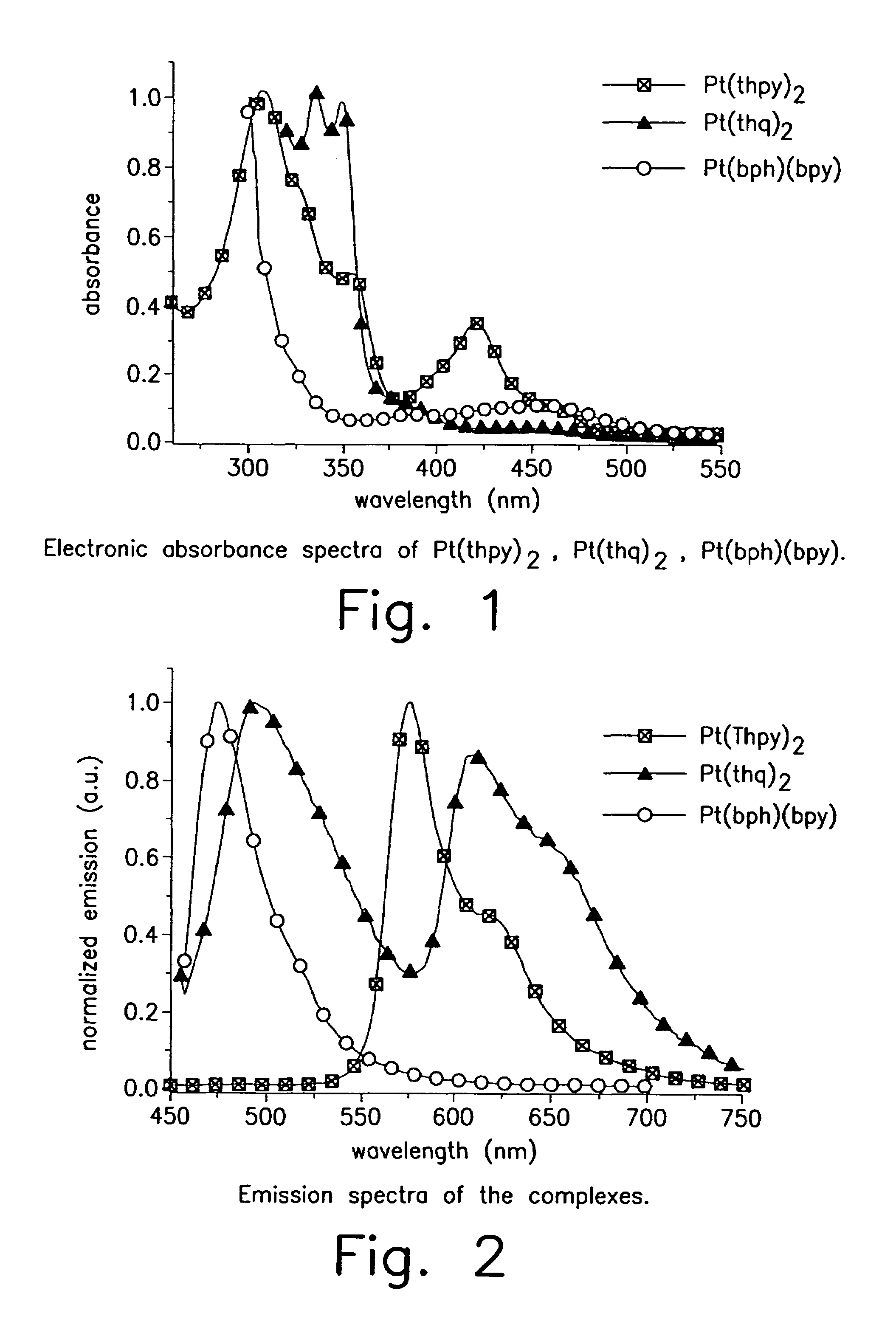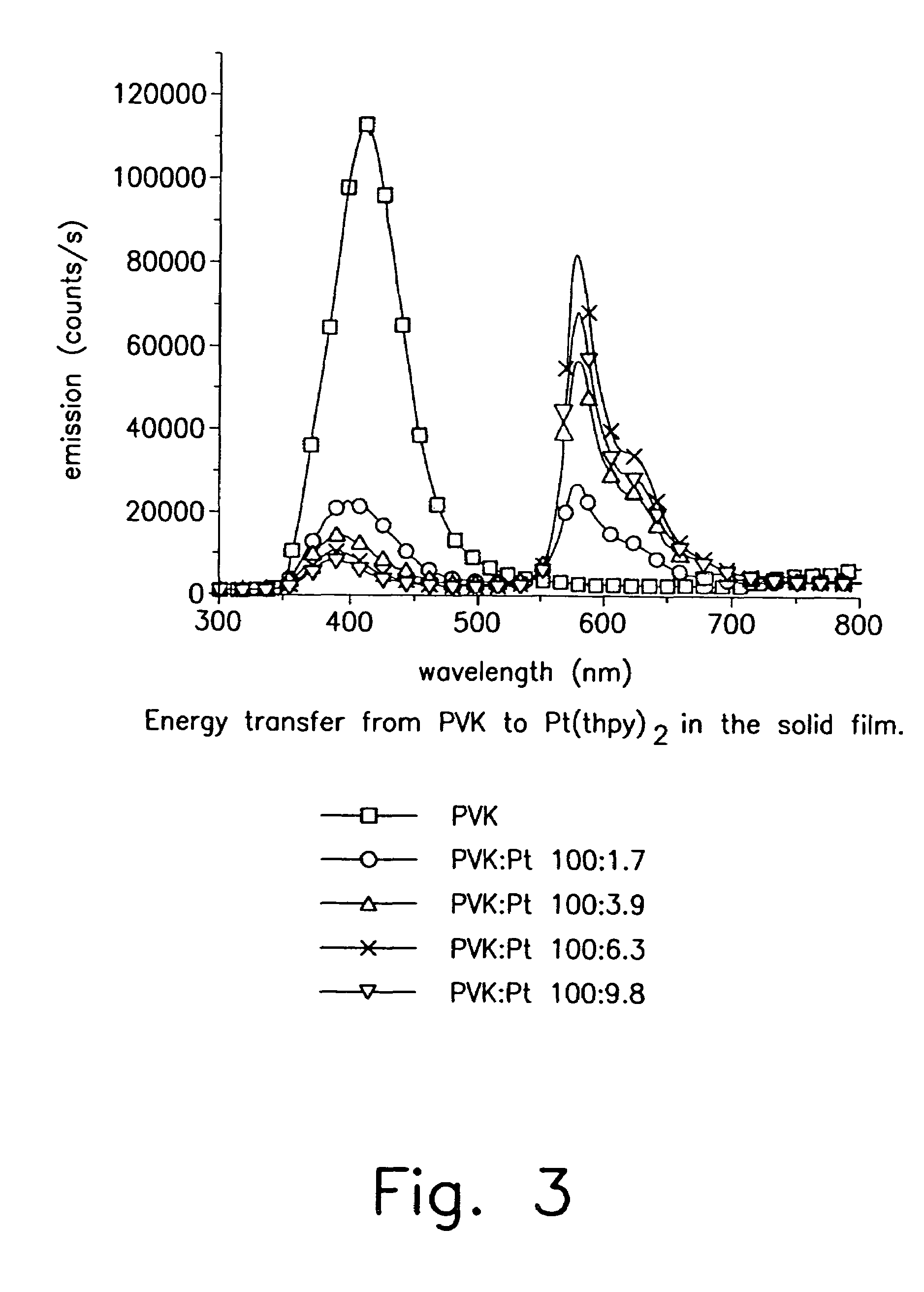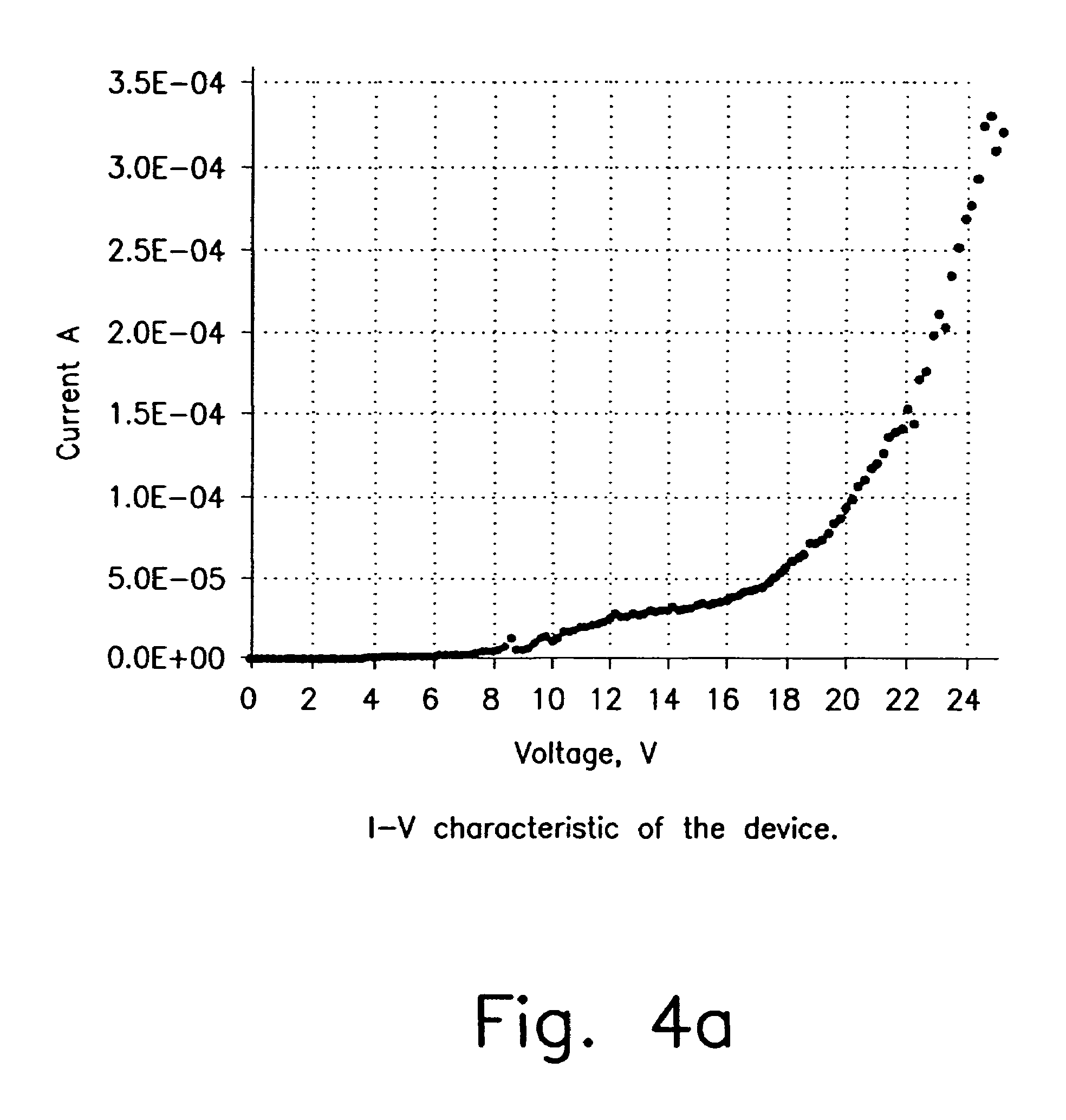Organometallic complexes as phosphorescent emitters in organic LEDs
a technology of organic leds and complexes, applied in the field of organic light emitting devices (oleds), can solve the problems of wasting energy in the triplet state, slow and inefficient luminescence, and few other problems, and achieve the effect of facilitating the combination of l
- Summary
- Abstract
- Description
- Claims
- Application Information
AI Technical Summary
Benefits of technology
Problems solved by technology
Method used
Image
Examples
example 1
ITO / PVK:PBD.Pt(thpy)2 (100:40:2) / Ag:Mg / Ag
[0147]Pt(thpy)2 does not appear to be stable toward sublimation. In order to test it in an OLED we have fabricated a polymer blended OLED with Pt(thpy)2 dopant. The optimal doping level was determined by the photoluminescence study described above. The emission from this device comes exclusively from the Pt(thpy)2 dopant. Typical current-voltage characteristic and light output curve of the device are shown in FIG. 4. Quantum efficiency dependence on applied voltage is demonstrated in FIG. 5. Thus, at 22 V quantum efficiency is ca. 0.11%. The high voltage required to drive this device is a result of the polymer blend OLED structure and not the dopant. Similar device properties were observed for a polymer blend device made with a coumarin dopant in place of Pt(thpy)2. In addition, electroluminescence spectrum and CIE diagram are shown in FIG. 6.
example 2
[0148]In this example, we describe OLEDs employing the green, electrophosphorescent material fac tris(2-phenylpyridine)iridium (Ir(ppy)3). This compound has the following formulaic representation:
[0149]The coincidence of a short triplet lifetime and reasonable photoluminescent efficiency allows Ir(ppy)3-based OLEDs to achieve peak quantum and power efficiencies of 8.0% (28 cd / A) and ˜30 lm / W respectively. At an applied bias of 4.3V, the luminance reaches 100 cd / m2 and the quantum and power efficiencies are 7.5% (26 cd / A) and 19 lm / W, respectively.
[0150]Organic layers were deposited by high vacuum (10−6 Torr) thermal evaporation onto a cleaned glass substrate precoated with transparent, conductive indium tin oxide. A 400 A thick layer of 4,4′-bis(N-(1-naphthyl)-N-phenyl-amino)biphenyl (α-NPD) is used to transport holes to the luminescent layer consisting of Ir(ppy)3 in CBP. A 200 A thick layer of the electron transport material tris-(8-hydroxyquinoline)aluminum (Alq3) is used to tra...
example 3
[0152]In addition to the doped device, we fabricated a heterostructure where the luminescent region was a homogeneous film of Ir(ppy)3. The reduction in efficiency (to ˜0.8% ) of neat Ir(ppy)3 is reflected in the transient decay, which has a lifetime of only ˜100 ns, and deviates significantly from mono-exponential behavior. A 6% Ir(ppy)3:CBP device without a BCP barrier layer is also shown together with a 6% Ir(ppy)3:Alq3 device with a BCP barrier layer. Here, very low quantum efficiencies are observed to increase with current. This behavior suggests a saturation of nonradiative sites as excitons migrate into the Alq3, either in the luminescent region or adjacent to the cathode.
PUM
| Property | Measurement | Unit |
|---|---|---|
| transparency | aaaaa | aaaaa |
| transparency | aaaaa | aaaaa |
| atomic number | aaaaa | aaaaa |
Abstract
Description
Claims
Application Information
 Login to View More
Login to View More - R&D
- Intellectual Property
- Life Sciences
- Materials
- Tech Scout
- Unparalleled Data Quality
- Higher Quality Content
- 60% Fewer Hallucinations
Browse by: Latest US Patents, China's latest patents, Technical Efficacy Thesaurus, Application Domain, Technology Topic, Popular Technical Reports.
© 2025 PatSnap. All rights reserved.Legal|Privacy policy|Modern Slavery Act Transparency Statement|Sitemap|About US| Contact US: help@patsnap.com



